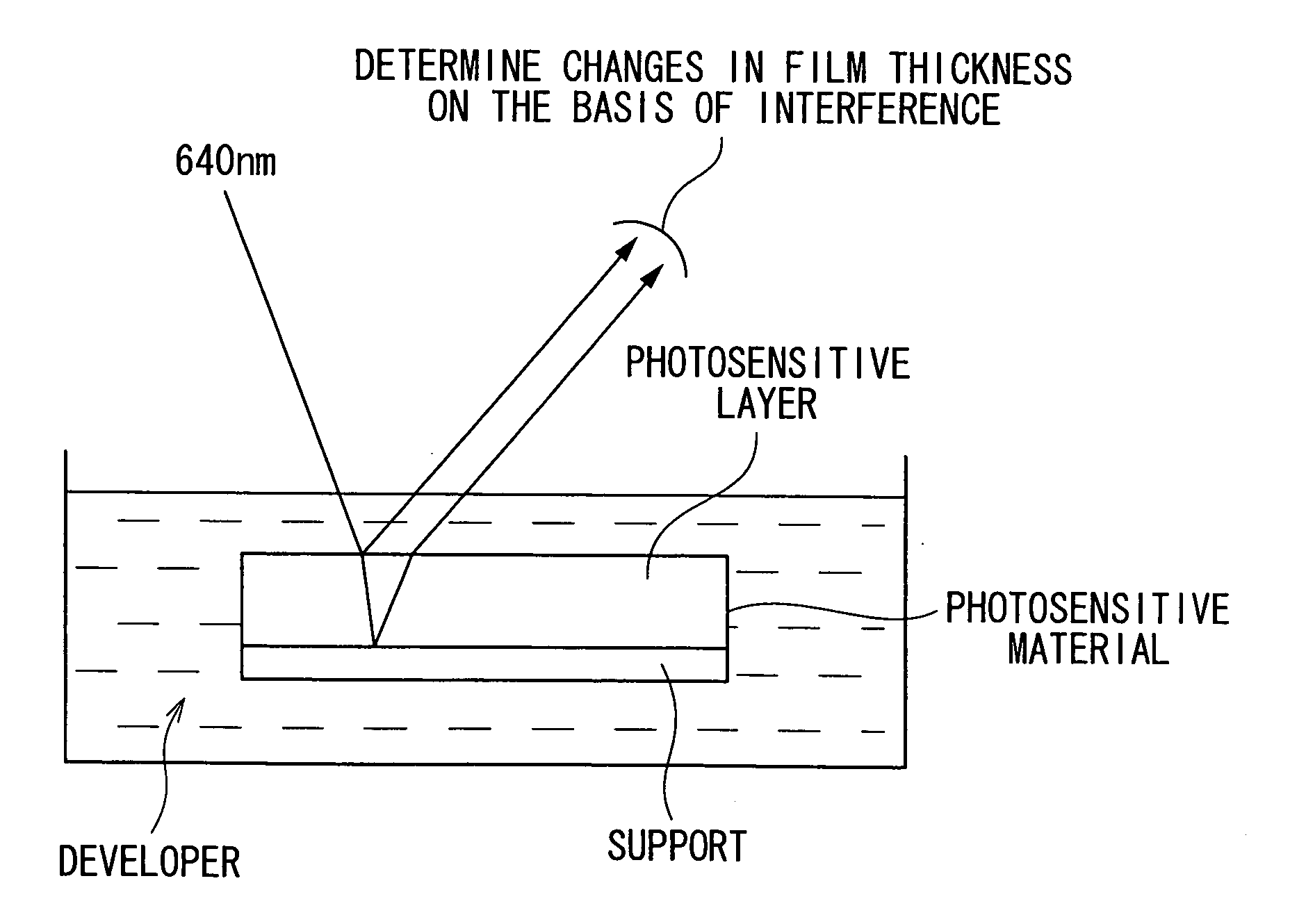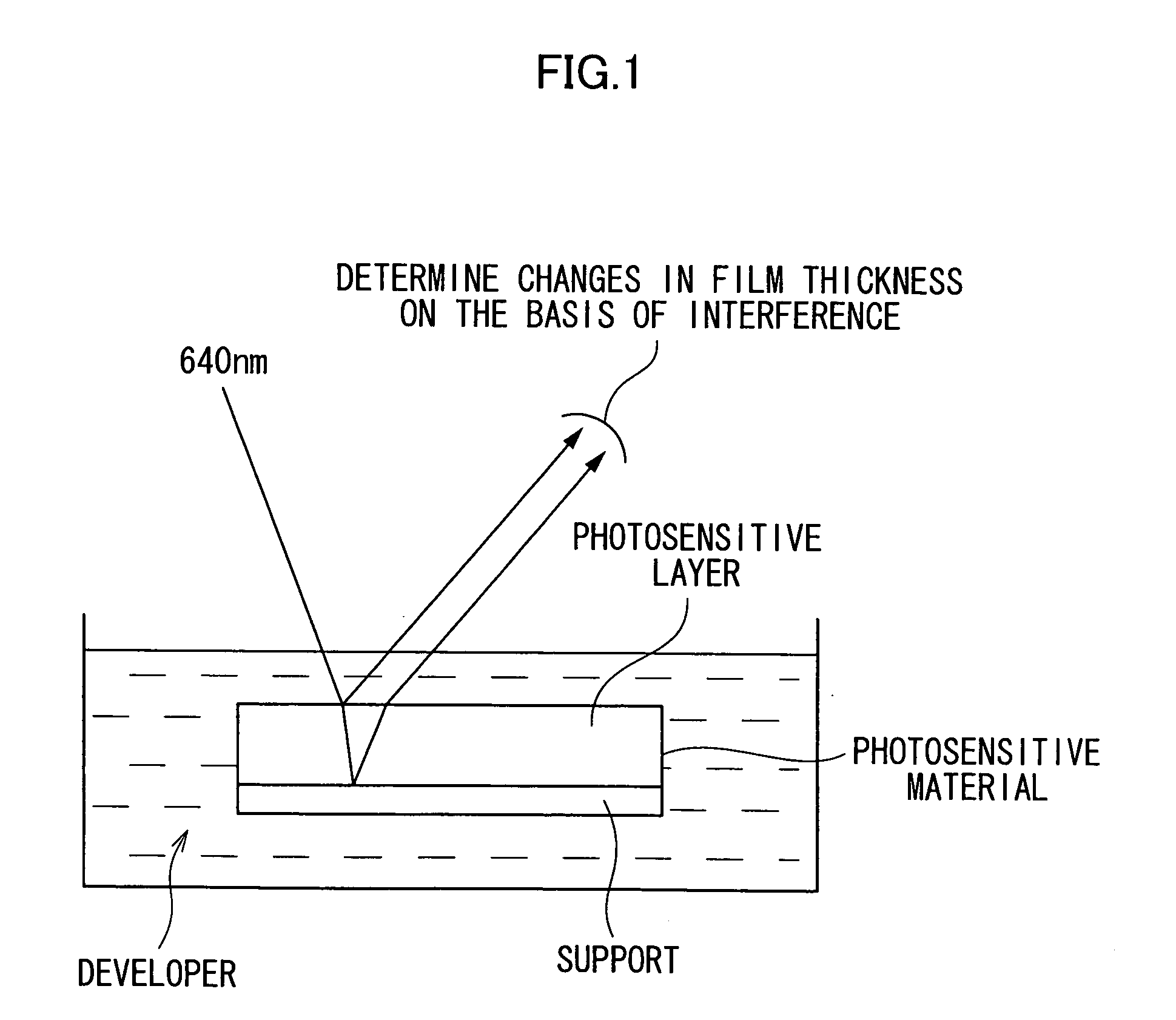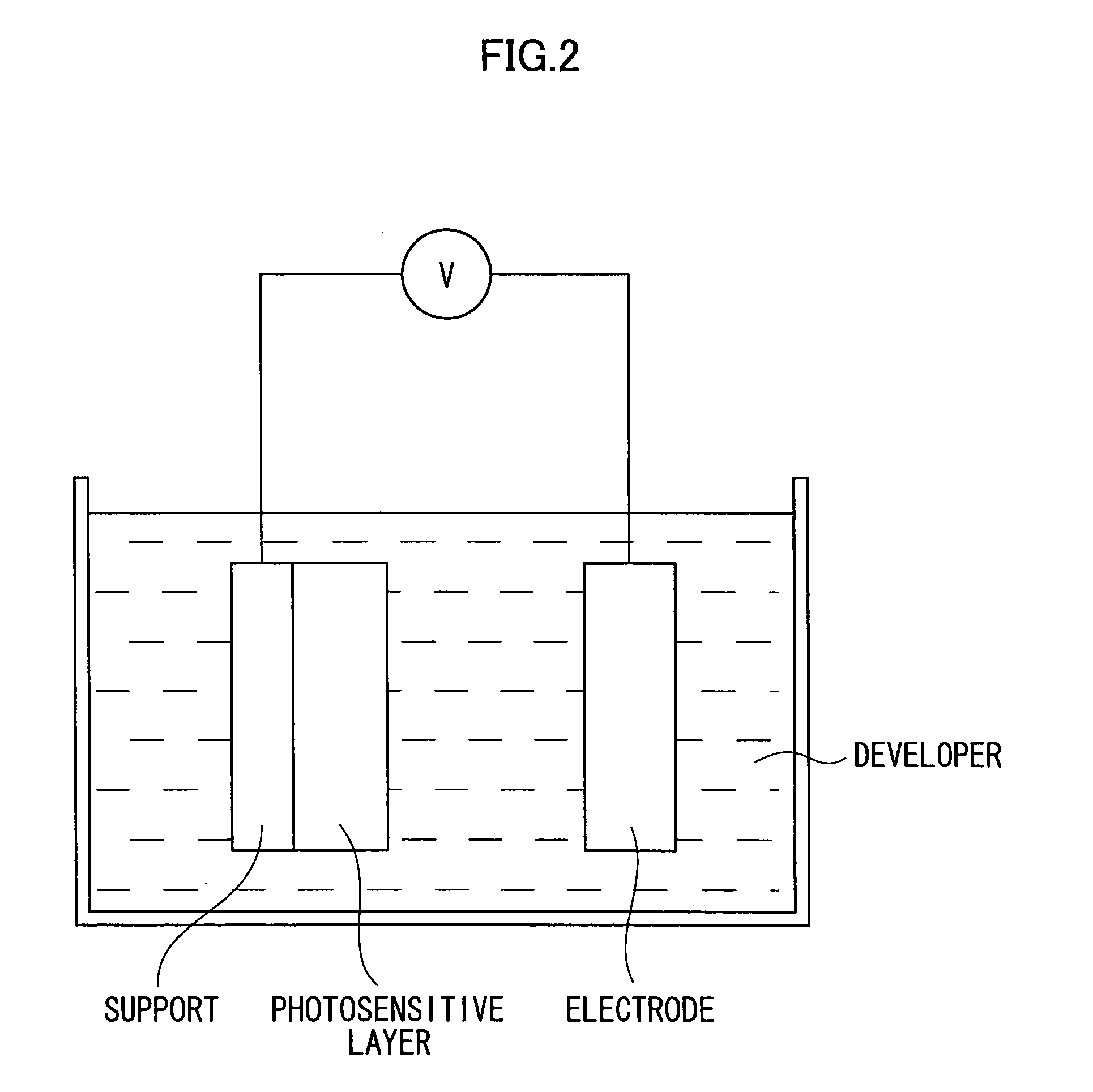Photosensitive composition and image recording material using the same
a composition and composition technology, applied in thermography, instruments, photosensitive materials, etc., can solve the problems of difficult to impart sufficiently high photosensitivity in the near infrared region, insufficient photosensitivity, and insufficient polymerization using photopolymerization initiators or photoacid generators
- Summary
- Abstract
- Description
- Claims
- Application Information
AI Technical Summary
Benefits of technology
Problems solved by technology
Method used
Image
Examples
synthesis example 1
Synthesis of Specific polymer P-1
[0149] To a suspension of 150 g of bismuthiol (2,5-dimercapto-1,3,4-thiadiazole) in 600 mL of methanol, 101 g of triethylamine was added gradually while cooled, to give a homogeneous solution. After dropwise addition of p-chloromethylstyrene (trade name: CMS-14, manufactured by Seimi Chemical) over 10 minutes at room temperature, the solution was stirred for 3 hours, allowing the reaction product to precipitate gradually. After stirring, the solution was cooled in an ice bath until the internal temperature reaches 10° C. and filtered under reduced pressure to separate the precipitate. The precipitate was washed with methanol and dried in a vacuum dryer for 1 day, to give the following compound (monomer) at a yield of 75%.
[0150] To a 1-liter four-neck flask equipped with a stirrer, nitrogen inlet, thermometer, and reflux condenser containing 40 g of above-obtained monomer, 70 g of methacrylic acid, 200 mL of ethanol, and 50 mL of distilled water we...
synthesis example 2
Synthesis of Specific monomer C-5
[0152] To a suspension of 89 g of thiocyanuric acid in 1.5 liters of methanol, a 30% aqueous solution containing 84 g of potassium hydroxide was gradually added under cooling, to give a homogeneous solution. To the solution, 230 g of p-chloromethylstyrene was added at room temperature gradually so that the internal temperature does not exceed 40° C. Although the product precipitates soon after the addition, the stirring was continued for 3 hours. Then, the product was separated by filtration. The product was washed with methanol and dried in a vacuum dryer for 1 day, to give the specific monomer (C-5) at a yield of 90%.
examples 1 through 3
[0153]
[0154] 0.3 mm thick, 1030 mm wide aluminum sheets (material JIS A 1050) were subjected to surface treatments below.
[0155] The surface treatments were conducted sequentially in the following steps (a) through (f). The liquid remaining on the aluminum plate after each treatment or water washing was removed with a nip roller.
[0156] (a) An aluminum plate was etched in a solution containing sodium hydroxide at a concentration 26 wt % and aluminum ion at a concentration of 6.5 wt % at a temperature of 70° C., until 5 g / m2 of the aluminum surface was corroded. The etched plate was then washed with water.
[0157] (b) The aluminum plate was subjected to a desmutting treatment of spraying an aqueous 1 wt % nitric acid solution (containing aluminum ion at 0.5 wt %) at a temperature of 30° C., and then washed with water.
[0158] (c) The aluminum plate was then subjected to an electrochemical surface roughening treatment by applying a 60-Hz alternate current voltage continuously. The elect...
PUM
| Property | Measurement | Unit |
|---|---|---|
| absorption maximum wavelength | aaaaa | aaaaa |
| pH | aaaaa | aaaaa |
| Absorption Maximum Wavelength | aaaaa | aaaaa |
Abstract
Description
Claims
Application Information
 Login to View More
Login to View More - R&D
- Intellectual Property
- Life Sciences
- Materials
- Tech Scout
- Unparalleled Data Quality
- Higher Quality Content
- 60% Fewer Hallucinations
Browse by: Latest US Patents, China's latest patents, Technical Efficacy Thesaurus, Application Domain, Technology Topic, Popular Technical Reports.
© 2025 PatSnap. All rights reserved.Legal|Privacy policy|Modern Slavery Act Transparency Statement|Sitemap|About US| Contact US: help@patsnap.com



